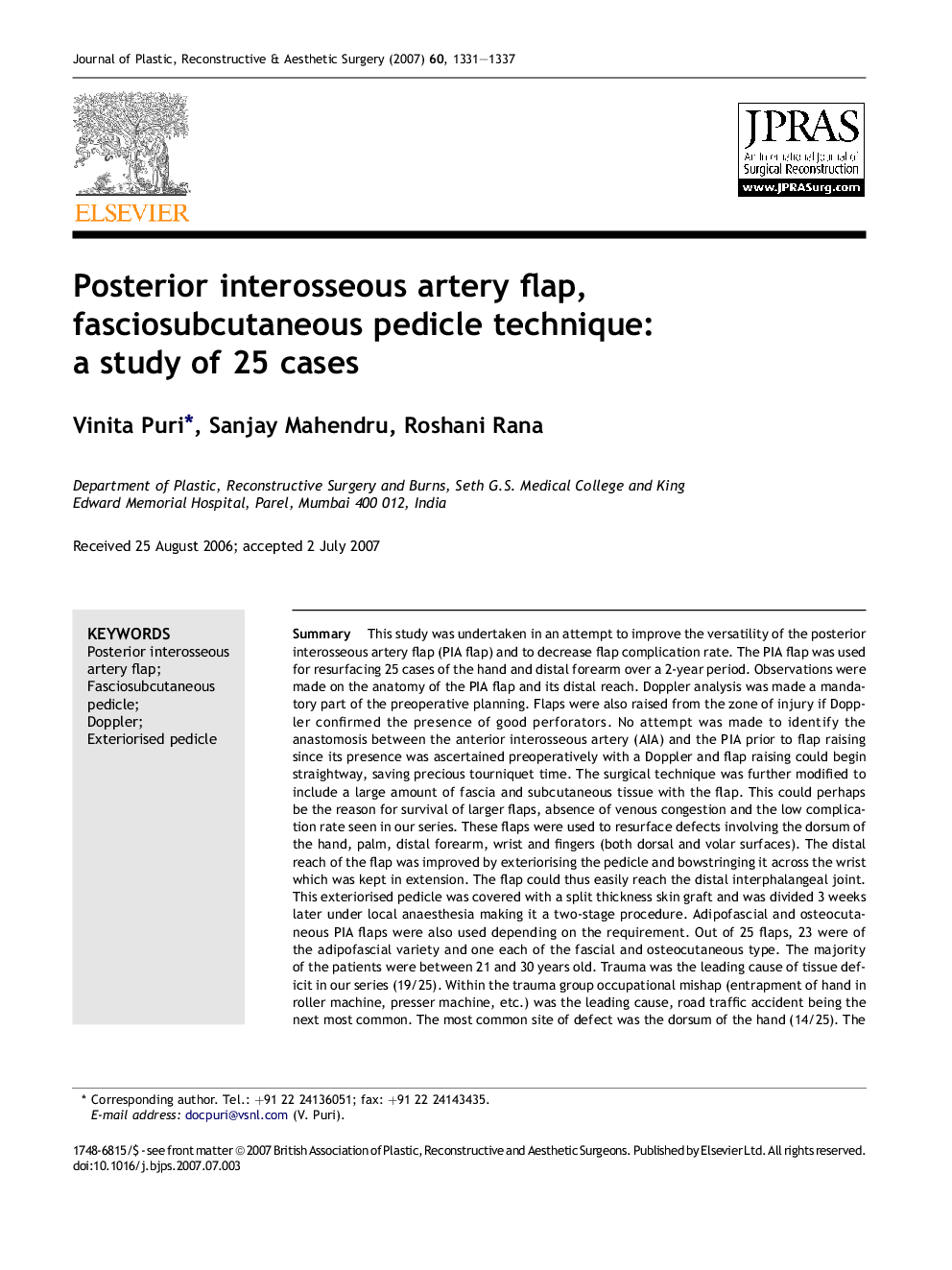| Article ID | Journal | Published Year | Pages | File Type |
|---|---|---|---|---|
| 4121593 | Journal of Plastic, Reconstructive & Aesthetic Surgery | 2007 | 7 Pages |
SummaryThis study was undertaken in an attempt to improve the versatility of the posterior interosseous artery flap (PIA flap) and to decrease flap complication rate. The PIA flap was used for resurfacing 25 cases of the hand and distal forearm over a 2-year period. Observations were made on the anatomy of the PIA flap and its distal reach. Doppler analysis was made a mandatory part of the preoperative planning. Flaps were also raised from the zone of injury if Doppler confirmed the presence of good perforators. No attempt was made to identify the anastomosis between the anterior interosseous artery (AIA) and the PIA prior to flap raising since its presence was ascertained preoperatively with a Doppler and flap raising could begin straightway, saving precious tourniquet time. The surgical technique was further modified to include a large amount of fascia and subcutaneous tissue with the flap. This could perhaps be the reason for survival of larger flaps, absence of venous congestion and the low complication rate seen in our series. These flaps were used to resurface defects involving the dorsum of the hand, palm, distal forearm, wrist and fingers (both dorsal and volar surfaces). The distal reach of the flap was improved by exteriorising the pedicle and bowstringing it across the wrist which was kept in extension. The flap could thus easily reach the distal interphalangeal joint. This exteriorised pedicle was covered with a split thickness skin graft and was divided 3 weeks later under local anaesthesia making it a two-stage procedure. Adipofascial and osteocutaneous PIA flaps were also used depending on the requirement. Out of 25 flaps, 23 were of the adipofascial variety and one each of the fascial and osteocutaneous type. The majority of the patients were between 21 and 30 years old. Trauma was the leading cause of tissue deficit in our series (19/25). Within the trauma group occupational mishap (entrapment of hand in roller machine, presser machine, etc.) was the leading cause, road traffic accident being the next most common. The most common site of defect was the dorsum of the hand (14/25). The largest flap measured 12 × 8 cm and the smallest flap measured 3 × 2 cm. Only three minor complications were noted, two cases of partial flap loss (one of them needing a secondary procedure of debridement and grafting) and one partial graft loss in the case of fascial flap which needed regrafting. Importantly no evidence of venous congestion was noted in any of the flaps.
